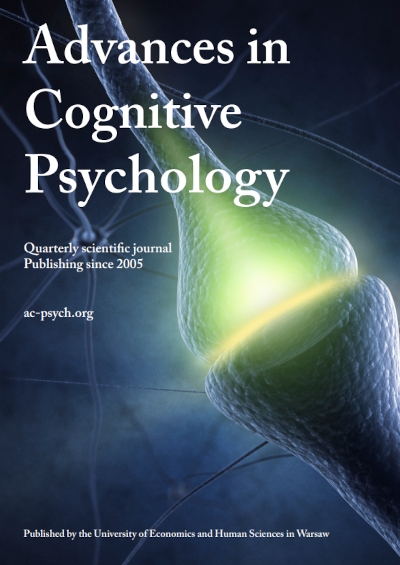Archive of all online content
-
Volume 21 Issue 4
pp. 309-500
(16 November 2025) -
Volume 21 Issue 3
pp. 212-308
(2 September 2025) -
Volume 21 Issue 2
pp. 120-211
(25 May 2025) -
Volume 21 Issue 1
pp. 1-93
(11 March 2025)
-
Volume 20 Issue 4
pp. 237-388
(20 November 2024) -
Volume 20 Issue 3
pp. 158-236
(19 August 2024) -
Volume 20 Issue 2
pp. 80-157
(24 June 2024) -
Volume 20 Issue 1
pp. 1-79
(1 March 2024)
-
Volume 19 Issue 4
pp. 1-105
(27 December 2023) -
Volume 19 Issue 3
pp. 211-333
(25 July 2023) -
Volume 19 Issue 2
pp. 111-200
(30 June 2023) -
Volume 19 Issue 1
pp. 1-110
(31 March 2023)
-
Volume 18 Issue 4
pp. 243-303
(31 December 2022) -
Volume 18 Issue 3
pp. 165-202
(30 September 2022) -
Volume 18 Issue 2
pp. 85-164
(30 June 2022) -
Volume 18 Issue 1
pp. 1-84
(31 March 2022)
-
Volume 17 Issue 4
pp. 250-291
(31 December 2021) -
Volume 17 Issue 3
pp. 193-249
(30 September 2021) -
Volume 17 Issue 2
pp. 99-192
(30 June 2021) -
Volume 17 Issue 1
pp. 1-98
(31 March 2021)
-
Volume 16 Issue 4
pp. 291-369
(31 December 2020) -
Volume 16 Issue 3
pp. 176-290
(30 September 2020) -
Volume 16 Issue 2
pp. 85-175
(30 June 2020) -
Volume 16 Issue 1
pp. 1-84
(31 March 2020)
-
Volume 15 Issue 4
pp. 236-317
(31 December 2019) -
Volume 15 Issue 3
pp. 169-235
(30 September 2019) -
Volume 15 Issue 2
pp. 75-168
(30 June 2019) -
Volume 15 Issue 1
pp. 1-74
(31 March 2019)
-
Volume 14 Issue 4
pp. 150-208
(31 December 2018) -
Volume 14 Issue 3
pp. 62-150
(30 September 2018) -
Volume 14 Issue 2
pp. 38-61
(30 June 2018) -
Volume 14 Issue 1
pp. 1-37
(31 March 2018)
-
Volume 13 Issue 4
pp. 267-322
(31 December 2017) -
Volume 13 Issue 3
pp. 190-266
(30 September 2017) -
Volume 13 Issue 2
pp. 121-189
(30 June 2017) -
Volume 13 Issue 1
pp. 1-120
(31 March 2017)
-
Volume 12 Issue 4 (special issue)
pp. 150-235
(31 December 2016) -
Volume 12 Issue 3
pp. 130-149
(30 September 2016) -
Volume 12 Issue 2
pp. 67-129
(30 June 2016) -
Volume 12 Issue 1
pp. 1-66
(31 March 2016)
-
Volume 11 Issue 4
pp. 118-135
(31 December 2015) -
Volume 11 Issue 3
pp. 64-117
(30 September 2015) -
Volume 11 Issue 2
pp. 31-63
(30 June 2015) -
Volume 11 Issue 1
pp. 1-30
(31 March 2015)
-
Volume 10 Issue 4
pp. 119-155
(31 December 2014) -
Volume 10 Issue 3
pp. 81-118
(30 September 2014) -
Volume 10 Issue 2
pp. 32-80
(30 June 2014) -
Volume 10 Issue 1
pp. 1-31
(27 February 2014)
-
Volume 9 Issue 4
pp. 156-223
(31 December 2013) -
Volume 9 Issue 3
pp. 112-155
(24 October 2013) -
Volume 9 Issue 2
pp. 53-111
(30 June 2013) -
Volume 9 Issue 1
pp. 1-52
(31 March 2013)
-
Volume 8 Issue 4
pp. 267-295
(31 December 2012) -
Volume 8 Issue 3
pp. 210-266
(27 September 2012) -
Volume 8 Issue 2
pp. 70-209
(28 June 2012) -
Volume 8 Issue 1
pp. 1-69
(29 March 2012)
-
Volume 7 Issue 2
pp. 55-156
(31 December 2011) -
Volume 7 Issue 1
pp. 1-54
(31 March 2011)
-
Volume 6 Issue 6
pp. 1-141
(31 December 2010)
-
Volume 5 Issue 5
pp. 1-134
(31 December 2009)
-
Volume 4 Issue 1
pp. 1-14
(31 March 2008)
-
Volume 3 Issue 4
pp. 419-465
(31 December 2007) -
Volume 3 Issue 3
pp. 363-417
(30 September 2007) -
Volume 3 Issue 1
pp. 1-361
(31 March 2007)
-
Volume 2 Issue 4
pp. 239-276
(31 December 2006) -
Volume 2 Issue 2
pp. 99-237
(30 June 2006) -
Volume 2 Issue 1
pp. 1-97
(31 March 2006)
-
Volume 1 Issue 1
pp. 1-16
()
Volume 12 Issue 1 (2016)
Letter from the Editors
Rob H. J. van der Lubbe, Ulrich Ansorge
-
Does Controlling for Temporal Parameters Change the Levels-of-Processing Effect in Working Memory?
Vanessa M. Loaiza, Valérie Camos

Vanessa M. Loaiza, Department of Psychology, University of Essex, Wivenhoe Park, Colchester, CO4 3SQ, UK.
E-mail: v.loaiza@essex.ac.uk
The distinguishability between working memory (WM) and long-term memory has been a frequent and long-lasting source of debate in the literature. One recent method of identifying the relationship between the two systems has been to consider the influence of long-term memory effects, such as the levels-of-processing (LoP) effect, in WM. However, the few studies that have examined the LoP effect in WM have shown divergent results. This study examined the LoP effect in WM by considering a theoretically meaningful methodological aspect of the LoP span task. Specifically, we fixed the presentation duration of the processing component a priori because such fixed complex span tasks have shown differences when compared to unfixed tasks in terms of recall from WM as well as the latent structure of WM. After establishing a fixed presentation rate from a pilot study, the LoP span task presented memoranda in red or blue font that were immediately followed by two processing words that matched the memoranda in terms of font color or semantic relatedness. On presentation of the processing words, participants made deep or shallow processing decisions for each of the memoranda before a cue to recall them from WM. Participants also completed delayed recall of the memoranda. Results indicated that LoP affected delayed recall, but not immediate recall from WM. These results suggest that fixing temporal parameters of the LoP span task does not moderate the null LoP effect in WM, and further indicate that WM and longterm episodic memory are dissociable on the basis of LoP effects.
Counterfactual Evaluation of Outcomes in Social Risk Decision-Making Situations: The Cognitive Developmental Paradox Revisited
Iván Padrón, María Jose Rodrigo, Manuel de Vega

Iván Padrón González, Developmental Psychology, University of La Laguna, Campus Guajara Sn, La Laguna, 38200, Spain.
E-mail: ivpadron@ull.es
We report a study that examined the existence of a cognitive developmental paradox in the counterfactual evaluation of decision-making outcomes. According to this paradox adolescents and young adults could be able to apply counterfactual reasoning and, yet, their counterfactual evaluation of outcomes could be biased in a salient socio-emotional context. To this aim, we analyzed the impact of health and social feedback on the counterfactual evaluation of outcomes in a laboratory decision-making task involving short narratives with the presence of peers. Forty risky (e.g., taking or refusing a drug), forty neutral decisions (e.g., eating a hamburger or a hotdog), and emotions felt following positive or negative outcomes were examined in 256 early, mid- and late adolescents, and young adults, evenly distributed. Results showed that emotional ratings to negative outcomes (regret and disappointment) but not to positive outcomes (relief and elation) were attenuated when feedback was provided. Evidence of development of cognitive decision-making capacities did also exist, as the capacity to perform faster emotional ratings and to differentially allocate more resources to the elaboration of emotional ratings when no feedback information was available increased with age. Overall, we interpret these findings as challenging the traditional cognitive developmental assumption that development necessarily proceeds from lesser to greater capacities, reflecting the impact of socio-emotional processes that could bias the counterfactual evaluation of social decision-making outcomes.
Fast and Conspicuous? Quantifying Salience With the Theory of Visual Attention
Alexander Krüger, Jan Tünnermann, Ingrid Scharlau

Alexander Krüger, Faculty of Arts and Humanities, Paderborn University, Warburger Straße 100, 33098 Paderborn, Germany.
Email: alexander.krueger@uni-paderborn.de
Particular differences between an object and its surrounding cause salience, guide attention, and improve performance in various tasks. While much research has been dedicated to identifying which feature dimensions contribute to salience, much less regard has been paid to the quantitative strength of the salience caused by feature differences. Only a few studies systematically related salience effects to a common salience measure, and they are partly outdated in the light of new findings on the time course of salience effects. We propose Bundesen’s Theory of Visual Attention (TVA) as a theoretical basis for measuring salience and introduce an empirical and modeling approach to link this theory to data retrieved from temporal-order judgments. With this procedure, TVA becomes applicable to a broad range of salience-related stimulus material. Three experiments with orientation pop-out displays demonstrate the feasibility of the method. A 4th experiment substantiates its applicability to the luminance dimension.
Keywords: salience, visual attention, Bayesian inference, theory of visual attention, computational modelingAbnormalities in the Visual Processing of Viewing Complex Visual Stimuli Amongst Individuals With Body Image Concern
A. J. F. Duncum, K. J. Atkins, F. L. Beilharz, M. E. Mundy

M. Mundy, School of Psychological Sciences, Room 404, Building 17, Clayton Campus, Monash University,Victoria 3800, Australia.
E-mail: matthew.mundy@monash.edu
Individuals with body dysmorphic disorder (BDD) and clinically concerning body-image concern (BIC) appear to possess abnormalities in the way they perceive visual information in the form of a bias towards local visual processing. As inversion interrupts normal global processing, forcing individuals to process locally, an upright-inverted stimulus discrimination task was used to investigate this phenomenon. We examined whether individuals with nonclinical, yet high levels of BIC would show signs of this bias, in the form of reduced inversion effects (i.e., increased local processing). Furthermore, we assessed whether this bias appeared for general visual stimuli or specifically for appearance-related stimuli, such as faces and bodies. Participants with high-BIC (n = 25) and low-BIC (n = 30) performed a stimulus discrimination task with upright and inverted faces, scenes, objects, and bodies. Unexpectedly, the high-BIC group showed an increased inversion effect compared to the low-BIC group, indicating perceptual abnormalities may not be present as local processing biases, as originally thought. There was no significant difference in performance across stimulus types, signifying that any visual processing abnormalities may be general rather than appearance-based. This has important implications for whether visual processing abnormalities are predisposing factors for BDD or develop throughout the disorder.
Keywords: body image, visual processing, inversion effect, perceptual learning, faces, bodies, scenes, objects, body dysmorphic disorderWord Meaning Frequencies Affect Negative Compatibility Effects In Masked Priming
Andreas Brocher, Jean-Pierre Koenig

Andreas Brocher, Universität zu Köln, Institut für Deutsche Sprache und Literatur I, Albertus Magnus Platz, 50923 Köln, Germany.
E-mail: abrocher@uni-koeln.de
Negative compatibility effects (NCEs)—that is, slower responses to targets in related than unrelated prime-target pairs, have been observed in studies using stimulus-response (S-R) priming with stimuli like arrows and plus signs. Although there is no consensus on the underlying mechanism, explanations tend to locate NCEs within the motor-response system. A characteristic property of perceptuo-motor NCEs is a biphasic pattern of activation: A brief period in which very briefly presented (typically) masked primes facilitate processing of related targets is followed by a phase of target processing impairment. In this paper, we present data that suggest that NCEs are not restricted to S-R priming with low-level visual stimuli: The brief (50 ms), backward masked (250 ms) presentation of ambiguous words (bank) leads to slower responses than baseline to words related to the more frequent (rob) but not less frequent meaning (swim). Importantly, we found that slowed responses are preceded by a short phase of response facilitation, replicating the biphasic pattern reported for arrows and plus signs. The biphasic pattern of priming and the fact that the NCEs were found only for target words that are related to their prime word’s more frequent meaning has strong implications for any theory of NCEs that locate these effects exclusively within the motor-response system.
Keywords: masked priming, response inhibition, word recognition, negative compatibility effects, lexical ambiguity


